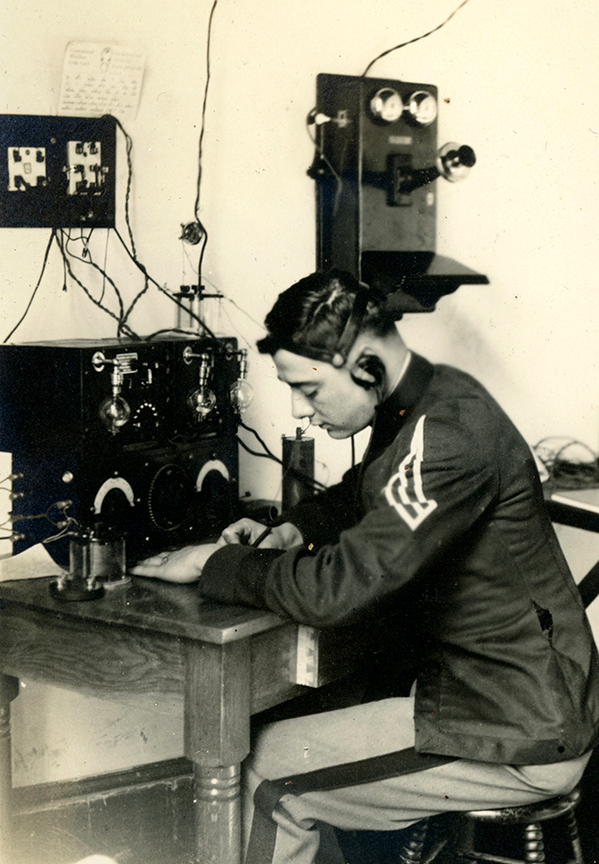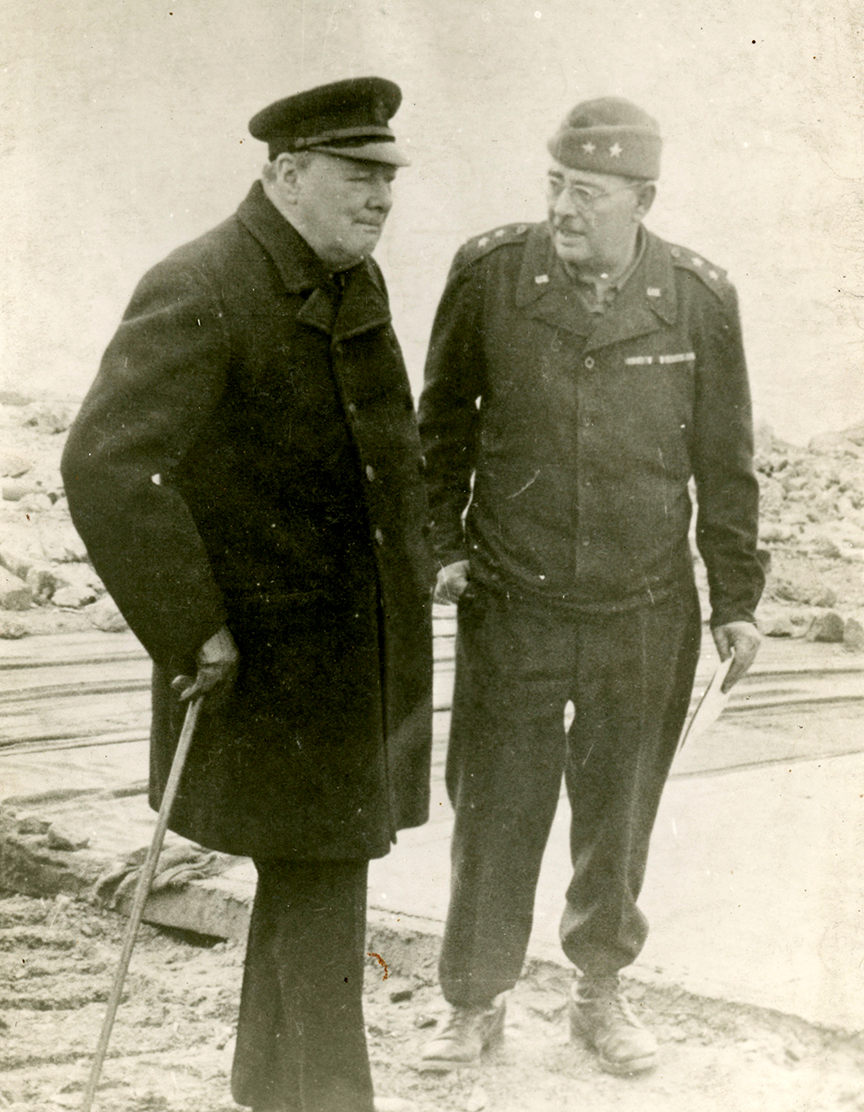The Major General Cecil R. Moore Historical Collection
In 1916, the Virginia Tech Corps of Cadets graduated future military leader Maj. Gen. Cecil R. Moore. Nicknamed “Scribe” while a cadet at VPI, Moore lived up to his moniker as a prolific record-keeper while serving in the U.S. Army.
From left: Gen. George S. Patton, Maj. Gen. Cecil R. Moore, and unknown Army officer during World War II.

Thanks to the generosity of the Moore family, the Major General Cecil R. Moore collection will anchor the Corps’ museum’s collection, providing new, primary sources for historical research. Hundreds of documents, postcards, and souvenirs populate the collection, along with his military uniforms, photographs, war booty, and diaries.
This virtual exhibition is but a snippet of the Moore Collection archival holdings. It offers a small glimpse into the life of cadet Moore as seen through the lens of the material culture of his life.
Maj. Gen. Cecil R. Moore is shown here as a cadet with what appears to be telegraph equipment, circa 1915-1916.

Hailing from Harrisonburg, Virginia, Moore graduated in 1916 at the top of his class with a degree in electrical engineering. He remained at VPI for his master’s degree in electrical engineering, which he earned in 1917 while teaching undergraduate physics.
When World War I started, he volunteered with the Coastal Artillery Corps.
Then-Capt. Cecil R. Moore’s World War I military ID card, circa 1918.

In World War I, Moore served in France as battery commander adjutant while taking university classes. After the war, he transferred into the Engineer Corp in Coblenz, Germany, as company commander of the 16th Engineers. At the rank of captain, Moore guided his troops in the repair of railroad lines destroyed in Germany during the war. After two years of service in Germany, Moore returned to the United States to Fort Sam Houston, Texas.
While serving under Gen. Dwight D. Eisenhower as chief engineer, European Theater of Operations, during World War II, Moore’s command was responsible for maintaining and repairing bridges, tunnels, and rail lines in Europe. During that command, Moore earned two Silver Stars, the Legion of Merit, the Distinguished Service Medal, and a Bronze Star. His foreign awards include the Croix de Guerre with Palme, Commander of the Bath, Legion of Honor, and Palme Academique.
Maj. Gen. Cecil R. Moore, at right, accompanied Winston Churchill on tours of Cherbourg, France, briefing the British prime minister on damage to the French infrastructure by German bombs. Photo circa July 1944.

Moore, better known as “Dinty,” (a nickname given to him during World War I) passed away in 1983, having led a full life with his wife, Esther, and their two children, Michael (VTCC class of ’56) and Judith.
His legacy lives on in the historical items he left behind.
Click on an image below to see the larger version and caption.




















